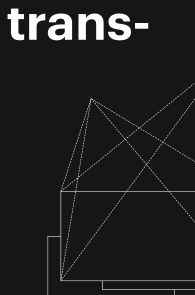open access
메뉴
open access
메뉴 ISSN : 2508-3309
ISSN : 2508-3309
If virtual reality is well known through the medias, it seems that a few visual concepts are clearly related to VR. We try to think about it and introduce to a philosophy of VR techniques. So, from techniques and media techno-powers promotional campaigns, we aim to areal technology, it means an objective reflection on the VR techniques. To do so, we study the representations of VR in films. And we conclude that a negative image is the most common representation, related, often, to an Orwellian vision of the future world. In the second part, we study some VR films, and especially some made by famous film directors (Iñárritu, Bigelow). 'Head-turn' and 'Walk-around' films are commented to check their limits. Finally, we consider that for the moment, VR remains only a new space to screen films (into VR platforms connected to the Internet).
After the coronavirus pandemic, quarantine or social distancing was required for public health and almost all international exchanges were restricted. Those changes affected huge peoples lifestyle including a way of behaving, purchase and even old habits seemed unable to change. The art market also faced many changes. Art fairs are the primary sectors in the art market but restrictions on gathering and exchanges between countries have primarily affected the size and the type of event. Online platforms are rising, art fairs opened online viewing rooms on the internet instead of booths in the convention center. Even galleries opened their own viewing rooms or renewed online pages to promote artworks and communicate with customers. In this paper, we will examine the effects of Corona on the art market and will seek a way to react to those changes and challenges.
Media audiences are defined in a complex relationship with a comprehensive media environment, and are structured and reconstructed according to changes in the media environment. Today, with the changes in the media environment represented by convergence and transmedia, discussions on audiences are actively developing, and debates between positive and negative views on the cultural and political characteristics continue. This paper aims to systematically examine the complexity and ambivalence of new audiences beyond the binomial confrontational debate, and to understand the conditions and mechanisms under which the progressive possibility can be actualized. First, it looks at the changes in today's media environment and contents, and examines the changing patterns of audiences in connection with them based on related research. In addition, it examines the debate on the cultural and political characteristics of new audiences, and explores ways to construct /reconstruct alternative audiences based on Jacques Ranciere's discussion. In conclusion, the characteristics and contents of the utopian and dystopian moments of the transmedia audience were examined, and the necessary works for realizing the former were identified.
This study focused on the media characteristics of internet live broadcasting in the New Media Age. To this end, analyzed the media characteristics of internet live broadcasting through SMCRE models consisting of source, message, channel, receiver, and effect. In addition, considered the unique feedback of internet live broadcasting that prior studies overlooked. It also presented problems with internet live broadcasting and prospects for future development of internet live broadcasting.
Previous studies show that VR images can influence consumers' attitudes and behaviors by evoking imagination. In this study, we introduce a reality-based closed-loop 3D image (hereafter Virtualgraph). Then we try to see whether such image would increase evocativeness in a mobile commerce environment and whether higher telepresence of the visual image of a product can increase the purchase intention of that product. In order to find the above, we developed a model comprised of constructs containing telepresence, perceived value price, perceived food quality, and vividness of visual imagery questionnaire (VVIQ). We used Virtualgraph application to conduct an experiment, and then conducted an interview as well as a survey. As results of the experiment, survey and interview, we found the followings. First, users evoke imagination better with Virtualgraph than with still images. Second, increased evocativeness affects purchase intention if the perceived quality of fresh food product is satif actory. Third, increased evocativeness makes users value products higher and do even much higher when the perceived quality of fresh food product is good. From the interview, we could find that the experimental group had higher purchase intentions and perceived products as more expensive ones. Also, they perceived images of products clearer and more vivid than did the control group. We also discuss the strategic implications of using Virtualgraph in mobile shopping malls.